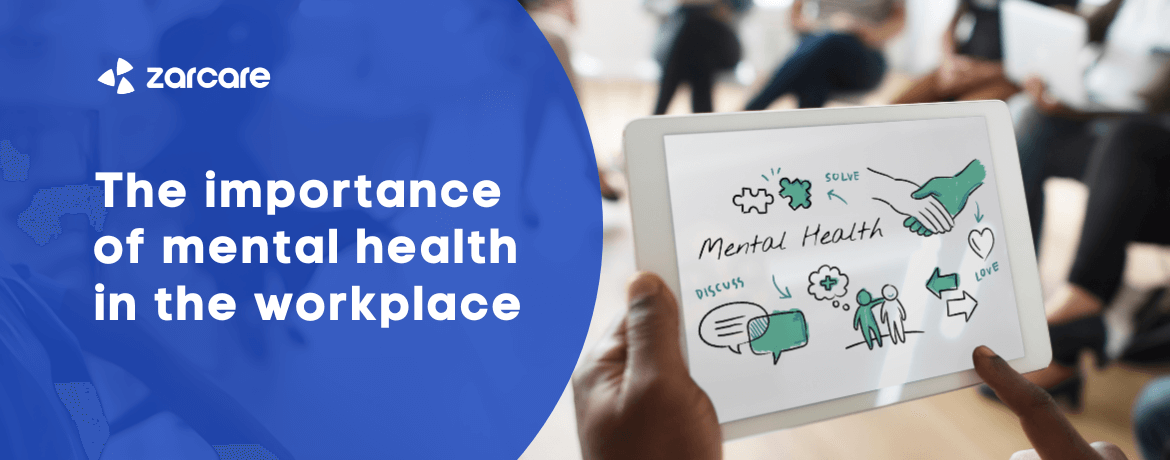The Importance of Mental Health in the Workplace: Strategies for Well-Being and Recognising Burnout

In today’s fast-paced work environment, prioritising mental health is essential for employees and organisations. As we navigate the challenges of the modern workplace, understanding the impact of mental well-being is crucial. Let’s explore why mental health matters at work and practical steps to promote a healthier, more supportive workplace. 1. Productivity and Performance: Employees with good mental health are more productive, creative, and engaged. When mental well-being is prioritised, overall job performance improves. Organisations benefit from reduced absenteeism, increased focus, and better decision-making when employees feel mentally supported. 2. Reducing Stigma: Addressing mental health openly reduces stigma and encourages employees to seek help without fear of judgment. Organisations that foster a culture of acceptance and understanding create a safer space for employees to discuss their mental health challenges. 3. Retention and Recruitment: A positive mental health environment attracts and retains top talent. Employees value workplaces prioritising their well-being. Organisations that invest in mental health initiatives demonstrate commitment to employee satisfaction and long-term retention. 1. Root Causes of Stress: Identify and address stressors within the workplace. Long hours, understaffing, and lack of support contribute to mental strain. Encourage open communication about workload and provide resources to manage stress effectively. 2. Flexible Work Options: Offer flexible schedules, remote work, and reasonable workloads. Flexibility allows employees to balance work and personal life, reducing burnout. Trust employees to manage their time effectively while meeting organisational goals. 3. Foster a Sense of Belonging: Create a supportive community where employees feel connected. Encourage team-building activities, mentorship, and inclusion. Feeling valued and part of a team enhances mental well-being. 4. Limit Communications Outside Work Hours: Set clear boundaries regarding after-hours emails and messages. Respect employees’ personal time. Constant connectivity can lead to burnout and disrupt work-life balance. 5. Training and Education: Provide mental health training for managers and employees. Equip them with tools to recognise signs of distress and offer support. Educate about stress management, resilience, and coping strategies. 1. Physical and Emotional Exhaustion: 2. Reduced Performance: 3. Detachment and Cynicism: 4. Physical Symptoms: Organisations play a pivotal role in creating a mentally healthy workplace. We can build resilient teams and foster well-being by implementing evidence-based strategies, supporting employees, and recognising burnout. Remember, a healthy workforce is an asset that drives organisational success and contributes to healthier communities. Sources: (1) Why mental health needs to be a top priority in the workplace. https://www.apa.org/news/apa/2022/surgeon-general-workplace-well-being (2) Mental Health in the Workplace – HelpGuide.org. https://www.helpguide.org/articles/work/mental-health-in-the-workplace.htm (3) 5 Strategies for Improving Mental Health at Work – Harvard Business Review. https://hbr.org/2024/04/5-strategies-for-improving-mental-health-at-work (4) Mental Health, Brain Health, and Substance Use. (5) Mental health at work – World Health Organisation (WHO). https://www.who.int/news-room/fact-sheets/detail/mental-health-at-work (6) Mental health in the workplace | CIPD. https://www.cipd.org/uk/knowledge/factsheets/mental-health-factsheet/ (7) Mental Health in the Workplace – Centers for Disease Control and Prevention. (8) Guidelines on mental health at work – World Health Organisation (WHO). Why Mental Health Matters:
Strategies for Workplace Well-Being:
Recognising Signs of Mental Burnout:
Conclusion: Prioritizing Mental Health for a Thriving Workplace
